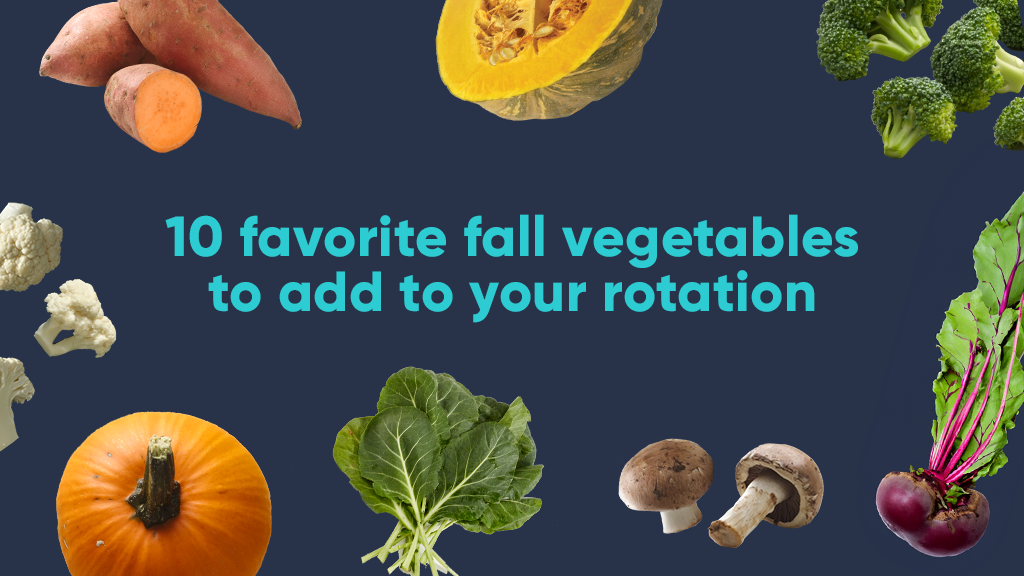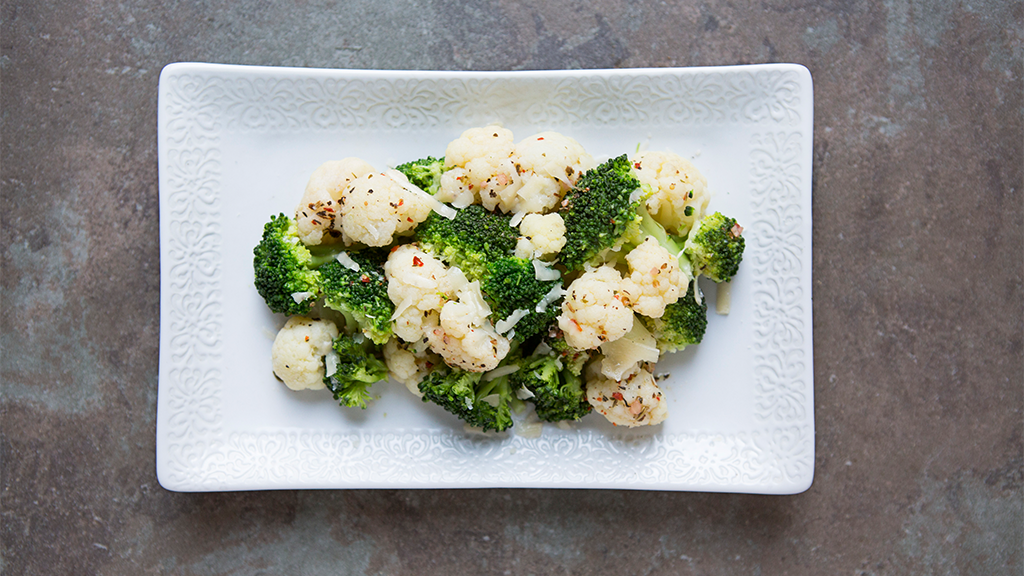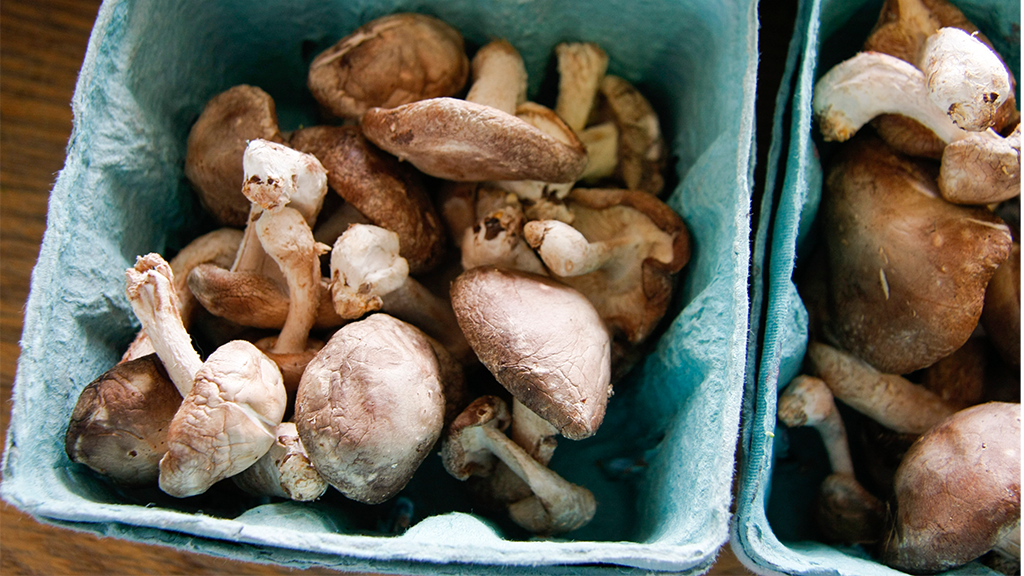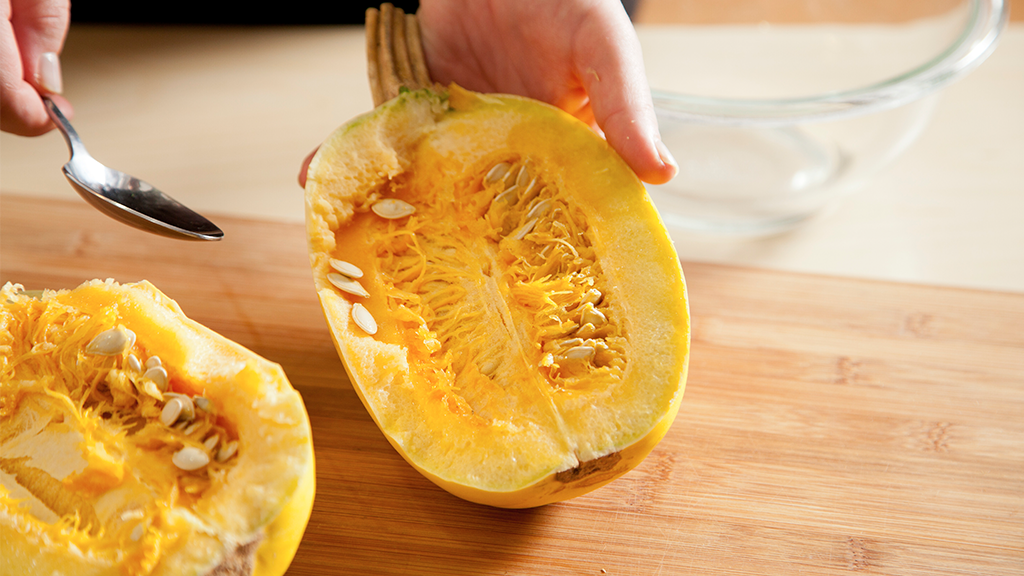Less than 10% of Americans are consuming the recommended servings of veggies in their daily diet. If that statistic hits a little close to home, then buckle up, this one’s for you. Thankfully, many fall produce options contain nutrients (like iron, calcium, potassium, fiber, and even some vitamin D) that support your total health and keep your body functioning at its prime We’ve enlisted the help of a registered dietitian nutritionist to harness the power of your favorite seasonal produce picks to show you how you can fit them into your keto*-friendly diet. Rest assured; you’ll walk away with some tasty tips on how to use them.

ACORN SQUASH:
Earthy and warm, acorn squash is a fun and festive option to include as a side this time of year. While higher in carbohydrates than some of the other choices we have listed (a ½ cup serving provides 15 grams of carbs and 4.5 grams of fiber, making the net carbs come in at 10.5 grams†), it can still fit into a balanced keto*-meal plan. And you will want to make room for it because a serving provides a slew of nutrients, like iron, calcium, magnesium, and potassium to name a few.
Dietitian Tip: Thinly slice a rinsed acorn squash in half, remove seeds and pump, then slice again into ½-inch strips. Brush with olive oil and season with garlic, salt, and pepper then roast. Serve roasted squash as a fun base for your holiday braised short-ribs or other protein source to reap the benefits of the squash while meeting your macros too.
BEETS:
Though their color differences may have you thinking otherwise, both red and golden beets provide similar nutritional benefits and are a wonderful addition to your menu. Both choices provide fiber, calcium, folate, magnesium, and potassium. A cup of cooked beets contains about 17 grams of carbohydrates and 5 grams of dietary fiber, or about 12 grams of net carbs†.
Dietitian Tip: Take a half cup of roasted beets, thinly slice them, and add them to your favorite leafy greens (like arugula). Top with sliced sirloin, goat cheese, a light vinaigrette, and :ratio’s Toasted Almond Granola for a fun twist on your salad.

BROCCOLI:
to cauliflower when it comes to keto*-lovers favorite lower carbohydrate veggies, broccoli actually comes into season during fall. With 3 grams of net carbs† per ½ cup serving, it’s a welcomed addition to your menu. Plus, in addition to the 3 grams of dietary fiber it provides, it also calcium, potassium, vitamin C, and choline (a nutrient that is crucial for memory and muscle and that 90% of American’s aren’t getting enough of.)
Dietitian Tip: For a fun twist on a spiced-up side dish, halve a head of fresh broccoli down the center (keeping the stem on.) Rinse under cool water, remove outer leaves, and steam. Remove from hot water then lay each half flat on a baking sheet. Brush with olive oil and sprinkle garlic, salt, pepper, and parmesan on top. Roast the broccoli in the oven until golden brown. Top each half with seasonal pumpkin seeds and serve alongside your protein of choice.
CAULIFLOWER:
There is a good reason keto* fans go crazy for cauliflower; it has 1.5 grams of fiber and 3 grams of carbs, making those net carbs come out to about 1.5 grams† per ½-cup serving. Plus, cauliflower is also a member of the cruciferous veggie family like broccoli, and offers some calcium, choline, and vitamin C too.
Dietitian Tip: If you’re not already, stock up on frozen riced cauliflower. Add ¼-cup into your morning smoothie made with :ratio’s keto*-friendly vanilla dairy drink, a ¼-cup of pumpkin puree, and a dash of pumpkin pie spice for a fun, seasonal twist.

COLLARD GREENS:
A staple in Southern cuisine, collard greens are a welcomeaddition to a keto*-friendly diet. One-cup of cooked collard greens provides 8 grams of carbohydrates and 6 grams of dietary fiber, making the net carb total come out to just 2 grams†. Plus, they also contain potassium, vitamin C, folate, and choline too.
Dietitian Tip: Experiment with cooked collard greens as a base for your favorite holiday ham or other protein choices. Try swapping them into your seasonal soups and stews for an extra punch of fiber too.
KALE:
The beautiful green hue kale imparts is about to make your holiday spread that more festive. Similar to those collard greens, kale is a low carb powerhouse. A one-cup serving of cooked kale provides 6 grams of carbs and 5 grams of dietary fiber, making the net carb count come out to just 1 gram†. Kale also provides some iron (about 1 milligram), vitamin C, and calcium.
Dietitian Tip: If you haven’t learned how to properly prepare kale, now is the time. Rinse the kale under cool running water and pat dry with paper towels. For a fun, seasonal snack, rip the kale into large pieces, removing hard stems, and gently massage with olive oil. Season with salt and pepper and place on your baking sheet to roast (or toss them in your air fryer) and cook until lightly crisp. Serve with your favorite holiday dips (like those warm, cheesy artichoke ones) as your low-carb chip of choice.

MUSHROOMS:
Fun fact: mushrooms can get a little “sun tan” when exposed to ultraviolet (UV) light and reap the vitamin D benefits the sunshine offers. A 1-cup serving of white mushrooms exposed to UV light provides approximately 18 micrograms of vitamin D (or roughly 90% of the daily value for vitamin D.) Plus, that same serving size has just 2 grams of carbs and 1 gram of dietary fiber, making the net carb count equal to 1 gram†.
Dietitian Tip: Mushrooms have a natural umami taste that offers a meaty texture and taste. Consider halving the amount of ground meat you’d use in meatballs and swap the other half with minced mushrooms. Not only will this increase the fiber in a usually fiber-less dish (that’s right, meat has no fiber), but you’ll also be providing your guests with some vitamin D, too.
PUMPKIN:
Nothing screams fall quite like pumpkins. If you’re as enthused as we are by the sight of everything pumpkin, you can certainly add this seasonal pick to your keto*-friendly diet. While a ½-cup serving of mashed pumpkin has 6 grams of carbs, the 1.5 grams of dietary fiber it provides brings the net carb total to 4.5 grams† (meaning it certainly is doable if you’d like to fit it into your macros). Plus, pumpkin contains other nutrients, like calcium, iron, potassium, and vitamin A (a fat-soluble vitamin that supports healthy vision.)
Dietitian Tip: For another seasonal sweet fix, consider mixing a tablespoon of pumpkin puree with a dash of cinnamon and a tablespoon of nut butter. Spread it over a :ratio soft baked chocolate brownie for a delicious, macro-friendly treat. (Don’t forget to try the cauliflower smoothie tip above too.)

SPAGHETTI SQUASH:
While zucchini may have its place in the summer menu as a pasta swap, spaghetti squash is a game changer for winter. A 1-cup serving of cooked spaghetti squash provides 2 grams of dietary fiber and 10 grams of carbs, making the net carb count come out to 8 grams†. Plus, it also provides some calcium and potassium too. Given a cup of traditional spaghetti contains 36 grams of net carbs+, spaghetti squash is an easy swap that reduces total calories as well.
Dietitian Tip: Save time when prepping your spaghetti squash by rinsing the outer skin under cool water, then slicing in half to remove seeds and pulp. Place in glass bowl and microwave in 3 minutes intervals to reduce the oven cook time.
SWEET POTATOES:
Sweet potatoes, like other spuds, contain more carbohydrates than some of their vegetable counterparts . But they can work in your keto*-friendly meal plan if you enjoy them. Case in point, ½ a medium sweet potato contains 13.5 grams of carbs and 2 grams of fiber, putting the total net carbs at 11.5 grams†. Sweet potatoes are a great complex carbohydrate option that are a nice post-work option to repair depleted glycogen stores after a tough workout. Plus, they also contain calcium, potassium, and vitamin A too.
Dietitian Tip: Take a ½ cooked sweet potato and top with ½-cup of :ratio’s vanilla cultured dairy yogurt snack. Drizzle nut butter on top and a little of :ratio’s granola of choice for added crunch. Enjoy after your workout under that cozy blanket to really savor the flavor (and feelings) of fall.
THE BOTTOM LINE
You can easily get started adding more seasonal produce into your fall meal plan. Just grab your favorites on your next grocery haul and let your creativity inspire how you fit them into your macros. Experiment with your go-to :ratio products to see what new innovations you come up with. Be sure to tag us @ratiofood so we can enjoy with you.
†2G Net Carbs = 2G Total Carbs - 0G Fiber - 0G Sugar Alcohol
*Always consult your physician before starting an eating plan that involves regular consumption of high fat foods. See information for calorie, total fat and sat. fat content.






